DeWalt DW310K Bruksanvisning
Läs gratis den bruksanvisning för DeWalt DW310K (6 sidor) i kategorin såg. Guiden har ansetts hjälpsam av 20 personer och har ett genomsnittsbetyg på 4.8 stjärnor baserat på 10.5 recensioner. Har du en fråga om DeWalt DW310K eller vill du ställa frågor till andra användare av produkten? Ställ en fråga
Sida 1/6

DW310, DW311
VS Reciprocating Saws
Scies alternatives à vitesse variable
Sierras alternativas de velocidad variable
IF YOU HAVE ANY QUESTIONS OR COMMENTS ABOUT THIS OR ANY DEWALT TOOL,
CALL US TOLL FREE AT: 1-800-4-D
EWALT (1-800-433-9258)
WARNING: To reduce the risk of injury, user must read instruction manual.
General Safety Rules
WARNING! Read all instructions. Failure to follow all instructions listed below
may result in electric shock, fire and/or serious injury. The term “power tool” in all
of the warnings listed below refers to your mains-operated (corded) power tool or
battery-operated (cordless) power tool.
SAVE THESE INSTRUCTIONS
1) WORK AREA SAFETY
a) Keep work area clean and well lit. Cluttered or dark areas invite accidents.
b) Do not operate power tools in explosive atmospheres, such as in the presence of
flammable liquids, gases or dust. Power tools create sparks which may ignite the dust
or fumes.
c) Keep children and bystanders away while operating a power tool. Distractions can
cause you to lose control.
2) ELECTRICAL SAFETY
a) Power tool plugs must match the outlet. Never modify the plug in any way. Do not
use any adapter plugs with earthed (grounded) power tools. Unmodified plugs and
matching outlets will reduce risk of electric shock.
b) Avoid body contact with earthed or grounded surfaces such as pipes, radiators,
ranges and refrigerators. There is an increased risk of electric shock if your body is earth-
ed or grounded.
c) Do not expose power tools to rain or wet conditions. Water entering a power tool will
increase the risk of electric shock.
d) Do not abuse the cord. Never use the cord for carrying, pulling or unplugging the
power tool. Keep cord away from heat, oil, sharp edges or moving parts. Damaged
or entangled cords increase the risk of electric shock. Replace or repair damaged cords.
Make sure your extension cord is in good condition. Use only 3-wire extension cords that
have 3-prong grounding-type plugs and 3-pole receptacles that accept the tool’s plug.
e) When operating a power tool outdoors, use an extension cord suitable for outdoor
use. Use of a cord suitable for outdoor use reduces the risk of electric shock. When using
an extension cord, be sure to use one heavy enough to carry the current your product will
draw. An undersized cord will cause a drop in line voltage resulting in loss of power and
overheating. The following table shows the correct size to use depending on cord length
and nameplate ampere rating. If in doubt, use the next heavier gage. The smaller the gage
number, the heavier the cord.
Minimum Gage for Cord Sets
Volts Total Length of Cord in Feet
120V 0-25 26-50 51-100 101-150
240V 0-50 51-100 101-200 201-300
Ampere Rating
More Not more AWG
Than Than
0 - 6 18 16 16 14
6 - 10 18 16 14 12
10 - 12 16 16 14 12
12 - 16 14 12 Not Recommended
3) PERSONAL SAFETY
a) Stay alert, watch what you are doing and use common sense when operating a
power tool. Do not use a power tool while you are tired or under the influence of
drugs, alcohol or medication. A moment of inattention while operating power tools may
result in serious personal injury.
b) Use safety equipment. Always wear eye protection. Safety equipment such as dust
mask, non-skid safety shoes, hard hat, or hearing protection used for appropriate
conditions will reduce personal injuries.
c) Avoid accidental starting. Ensure the switch is in the off-position before plugging
in. Carrying power tools with your finger on the switch or plugging in power tools that have
the switch on invites accidents.
d) Remove any adjusting key or wrench before turning the power tool on. A wrench or
a key left attached to a rotating part of the power tool may result in personal injury.
e) Do not overreach. Keep proper footing and balance at all times. This enables better
control of the power tool in unexpected situations.
f) Dress properly. Do not wear loose clothing or jewellery. Keep your hair, clothing and
gloves away from moving parts. Loose clothes, jewellery or long hair can be caught in
moving parts. Air vents often cover moving parts and should also be avoided.
g) If devices are provided for the connection of dust extraction and collection facilities,
ensure these are connected and properly used. Use of these devices can reduce dust-
related hazards.
4) POWER TOOL USE AND CARE
a) Do not force the power tool. Use the correct power tool for your application. The
correct power tool will do the job better and safer at the rate for which it was designed.
b) Do not use the power tool if the switch does not turn it on and off. Any power tool that
cannot be controlled with the switch is dangerous and must be repaired.
c) Disconnect the plug from the power source and/or the battery pack from the power
tool before making any adjustments, changing accessories, or storing power tools.
Such preventive safety measures reduce the risk of starting the power tool accidentally.
d) Store idle power tools out of the reach of children and do not allow persons
unfamiliar with the power tool or these instructions to operate the power tool. Power
tools are dangerous in the hands of untrained users.
e) Maintain power tools. Check for misalignment or binding of moving parts, breakage
of parts and any other condition that may affect the power tools operation. If dam-
aged, have the power tool repaired before use. Many accidents are caused by poorly
maintained power tools.
f) Keep cutting tools sharp and clean. Properly maintained cutting tools with sharp cutting
edges are less likely to bind and are easier to control.
g) Use the power tool, accessories and tool bits etc., in accordance with these
instructions and in the manner intended for the particular type of power tool, taking
into account the working conditions and the work to be performed. Use of the power
tool for operations different from those intended could result in a hazardous situation.
5) SERVICE
a) Have your power tool serviced by a qualified repair person using only identical
replacement parts. This will ensure that the safety of the power tool is maintained.
Additional Specific Safety Rules
• Hold tool by insulated gripping surfaces when performing an operation where the
cutting tool may contact hidden wiring or its own cord. Contact with a “live” wire will
make exposed metal parts of the tool “live” and shock the operator.
• Use clamps or another practical way to secure and support the workpiece to a stable
platform. Holding the work by hand or against your body leaves it unstable and may lead to
loss of control.
•Keep hands away from moving parts. Never place your hands near the cutting area.
• Keep hands away from cutting area. When sawing, never reach underneath or behind the
material being cut for any reason.
•Never hold work in your hand, lap or against parts of your body when sawing. The saw
my slip and the blade could contact the body causing injury.
•Use extra caution when cutting overhead and pay particular attention to overhead
wires which may be hidden from view. Anticipate the path of falling branches and debris
ahead of time.
•Do not operate this tool for long periods of time. Vibration caused by the operating action
of this tool may cause permanent injury to fingers, hands, and arms. Use gloves to provide
extra cushion, take frequent rest periods, and limit daily time of use.
WARNING: Wear appropriate personal hearing protection during use. Under some
conditions and duration of use, noise from this product may contribute to hearing loss.
WARNING: Always use eye protection. All users and bystanders must wear eye protection
that conforms to ANSI Z87.1.
CAUTION: When not in use, place tool on its side on a stable surface where it will not
cause a tripping or falling hazard. Some tools with large battery packs will stand upright on
the battery pack but may be easily knocked over.
WARNING: Some dust created by power sanding, sawing, grinding, drilling, and other con-
struction activities contains chemicals known to cause cancer, birth defects or other reproductive
harm. Some examples of these chemicals are:
• lead from lead-based paints,
• crystalline silica from bricks and cement and other masonry products, and
• arsenic and chromium from chemically-treated lumber (CCA).
Your risk from these exposures varies, depending on how often you do this type of work. To
reduce your exposure to these chemicals: work in a well ventilated area, and work with
approved safety equipment, such as those dust masks that are specially designed to filter out
microscopic particles.
•Avoid prolonged contact with dust from power sanding, sawing, grinding, drilling, and
other construction activities. Wear protective clothing and wash exposed areas with
soap and water. Allowing dust to get into your mouth, eyes, or lay on the skin may promote
absorption of harmful chemicals.
WARNING: Use of this tool can generate and/or disburse dust, which may cause serious and
permanent respiratory or other injury. Always use NIOSH/OSHA approved respiratory protection
appropriate for the dust exposure. Direct particles away from face and body.
• The label on your tool may include the following symbols. The symbols and their definitions
are as follows:
V................volts A ..............amperes
Hz..............hertz W ..............watts
min ............minutes ............alternating current
..........direct current no..............no load speed
..............Class II Construction ..............earthing terminal
..............safety alert symbol .../min........revolutions per minute
COMPONENTS (Fig. 1)
A. Trigger switch F. Blade clamp collar
B. Variable speed selector wheel G. Hand grip
C. Shoe release lever H. Rear handle
D. Adjustable shoe
E. Blade action selector
TRIGGER SWITCH
The variable speed trigger switch (A) will give you added versatility. The further the trigger is
depressed the higher the speed of the saw. To turn the tool OFF, release the trigger.
NOTE: This tool has no provision to lock the switch in the ON position, and should never be
locked ON by any other means.
CAUTION: Use of very slow speed is recommended only for beginning a cut. Prolonged use at
very slow speed may damage your saw.
VARIABLE SPEED SWITCH AND SELECTOR WHEEL
Both saws are equipped with a variable speed control (0 to 2600 SPM). As the trigger switch is
depressed, the speed of the saw blade increases.
The DW311 has a variable speed selector wheel (B) to control the speed of the tool. To select a
slow speed for operating your saw, rotate the wheel to a low number on the dial. To select a high-
er speed, rotate the wheel to a higher number.
The lower speeds are recommended for most metal cutting, while the higher speeds are
recommended for wood. A few practice cuts on scrap material at various speeds will aid you in
choosing the best speed for obtraining the desired results for your application.
DEWALT Industrial Tool Co., 701 East Joppa Road, Baltimore, MD 21286
(FEB06) Form No. 634900-00 DW310, DW311 Copyright © 2005, 2006 DEWALT
The following are trademarks for one or more DEWALT power tools: the yellow and black color scheme;
the “D” shaped air intake grill; the array of pyramids on the handgrip; the kit box configuration; and the
array of lozenge-shaped humps on the surface of the tool.
INSTRUCTION MANUAL
GUIDE D'UTILISATION
MANUAL DE INSTRUCCIONES
INSTRUCTIVO DE OPERACIÓN, CENTROS DE SERVICIO Y PÓLIZA
DE GARANTÍA. LÉASE ESTE INSTRUCTIVOADVERTENCIA:
ANTES DE USAR EL PRODUCTO.
If you have questions or comments, contact us.
Pour toute question ou tout commentaire, nous contacter.
Si tiene dudas o comentarios, contáctenos.
1-800-4-DEWALT • www.dewalt.com
Produktspecifikationer
| Varumärke: | DeWalt |
| Kategori: | såg |
| Modell: | DW310K |
| Vikt: | 3900 g |
| Bredd: | 460 mm |
| Höjd: | 60 mm |
| Slaglängd: | 28.575 mm |
| Produktens färg: | Black, Yellow |
| väska: | Ja |
| Strömkälla: | AC |
| Ineffekt: | 1200 W |
| Slagfrekvens obelastad (max): | 2700 spm |
| Bladen kan bytas ut utan verktyg: | Ja |
Behöver du hjälp?
Om du behöver hjälp med DeWalt DW310K ställ en fråga nedan och andra användare kommer att svara dig
såg DeWalt Manualer

31 Augusti 2025
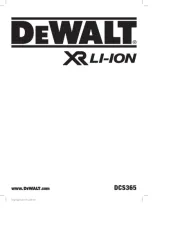
4 Augusti 2025

7 Juni 2025

7 Juni 2025

7 Juni 2025

6 Juni 2025
såg Manualer
- Solo
- Alpha Tools
- Black Decker
- Maktec
- Holzmann
- Best
- Worx
- Skil
- Gude
- Daewoo
- Einhell
- Avantco
- Fein
- Practixx
- Dedra
Nyaste såg Manualer
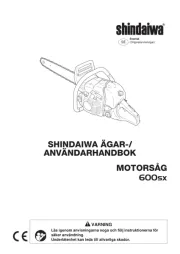
18 Oktober 2025
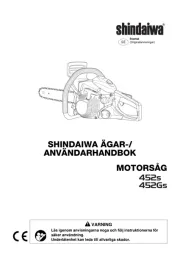
16 Oktober 2025
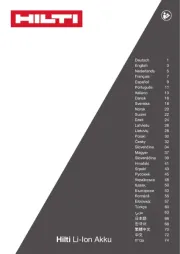
15 Oktober 2025
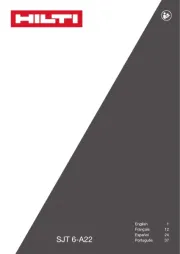
14 Oktober 2025
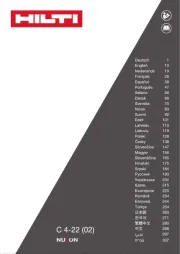
14 Oktober 2025

14 Oktober 2025
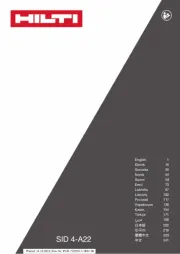
14 Oktober 2025

14 Oktober 2025
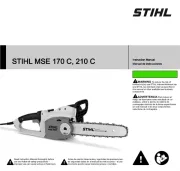
13 Oktober 2025
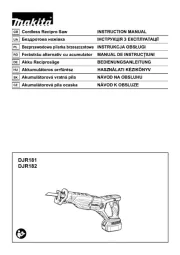
13 Oktober 2025